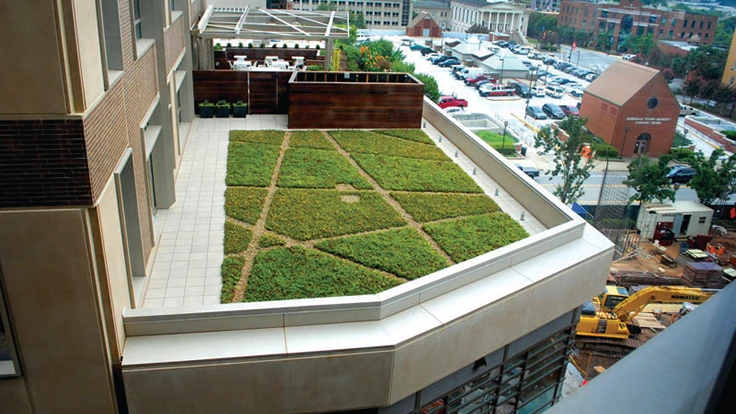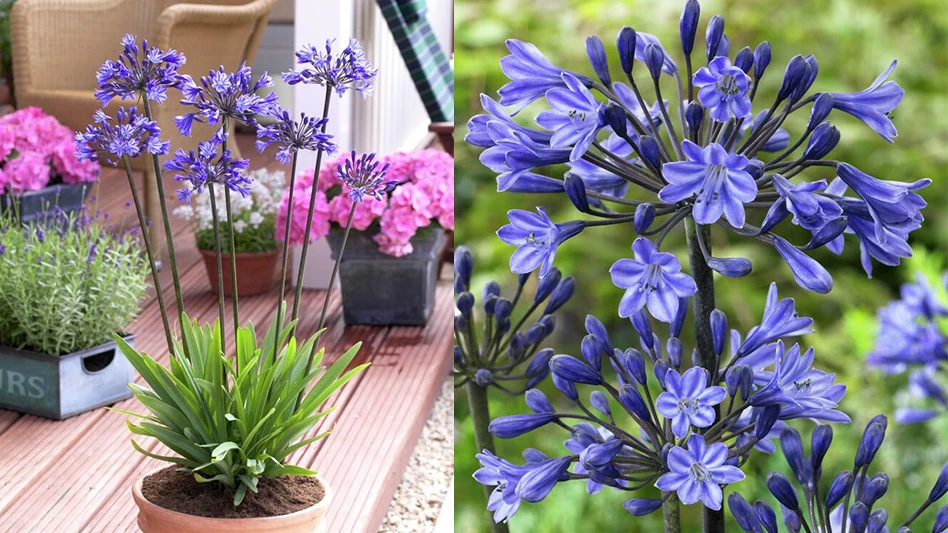
The construction of new buildings is a given — but their styles and forms are not. Design sensibilities are constantly changing, and the green industry is rapidly taking notice of one trend in particular: green roofs.
Elevated gardening is not a new concept. People have been planting gardens on rooftops for decades, but the practicality and appeal of green roofs, which function similarly to a yard planted into the roof of a building, are catching on with architects, landscapers, urban planners, homeowners and more.
To plant a green roof or “living roof,” a waterproofing membrane is built into the surface of a building’s roof (or wall to create a “living wall”) and a growing medium is layered over the membrane, into which ornamental grasses, turf and other plants can be grown. This provides extra color, life and vibrancy to new and existing structures and can also enhance the rain water drainage capabilities of the building.
Coinciding with the increasing popularity of urban gardens (see our article on this topic here), green roofing is gaining favor with planners and landscapers alike. Ed Snodgrass, president and owner of Green Roof Plants in Maryland, says the perception of green roofs has certainly changed during the past 10 to 20 years.

Green roofs, or “living roofs,” are gaining popularity as a method of beautification and storm water filtration on new and existing structures.
“It’s not been parabolic growth, but if I look all the way back to 1999 or something, there would be no one on architecture boards who would have a green roof,” Snodgrass says. “Now, I think, almost all flat-roof commercial buildings probably start with a green roof, and it has to be taken out [of the plan] for financial reasons or structural loading. They are part of the conversation now, so that marketing hurdle has been crossed.
It’s not been parabolic growth, but if I look all the way back to 1999 or something, there would be no one on architecture boards who would have a green roof,” Snodgrass says. “Now, I think, almost all flat-roof commercial buildings probably start with a green roof, and it has to be taken out [of the plan] for financial reasons or structural loading. They are part of the conversation now, so that marketing hurdle has been crossed.
“Roofers used to say, ‘I’ve spent my whole career trying to move water off the roof, and now you’re trying to hold it?’ Now, roofers are some of the biggest advocates,” Snodgrass adds.
Read the rest of this story from the August issue here.
Photos courtesy of Living Roofs Inc.
Latest from Garden Center
- Meet the All-America Selections AAS winners for 2025
- AmericanHort accepting applications for HortScholars program at Cultivate'25
- 2025 Farwest Show booth applications now open
- The Garden Center Group hosting 'The Financial Basics of Garden Retailing Workshop Series'
- Weekend Reading 11/22/24
- Hurricane Helene: Florida agricultural production losses top $40M, UF economists estimate
- Terra Nova Nurseries shares companion plants for popular 2025 Colors of the Year
- Applications open for Horticultural Research Institute Leadership Academy Class of 2026





